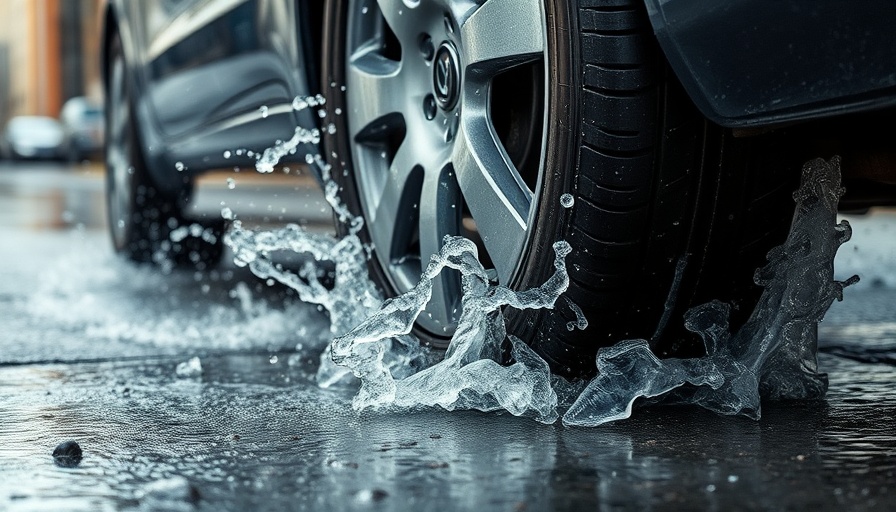
Understanding Hydroplaning: What Exactly Happens?
Hydroplaning occurs when a vehicle’s tires lose their grip on the road due to the accumulation of water, causing the tread to oversaturate. This phenomenon creates a layer of water that prevents the tires from making contact with the roadway, leading to a significant loss of steering control and braking ability. As defensive driving expert Robert Dillman points out, the tires can effectively 'float' on water, mimicking the experience of driving on ice. It’s crucial to understand that this can also happen on surfaces like mud or snow if the tires cannot distribute the accumulated substance quickly enough.
The Dangers of Hydroplaning: Why It’s a Major Risk
One of the primary concerns with hydroplaning is its capacity to drastically alter vehicle handling. Just a thin film of water can elevate your risk of an accident, as it makes steering, braking, and accelerating difficult. When driving on slick surfaces, the likelihood of overcorrecting your steering increases, which can send you into a dangerous spin. In fact, statistics show that hydroplaning contributes to numerous vehicular accidents, emphasizing the immediate need for drivers to understand its causes and mitigation strategies.
Key Causes of Hydroplaning: What Drivers Should Know
Here are some common causes that increase the chances of hydroplaning:
- Water Accumulation: The most straightforward cause, heavy rainfall combined with road conditions can lead to significant standing water.
- Oil Slicks: After dry spells, oil can rise to the surface when it rains, creating slippery conditions.
- Worn Tires: Tires with low tread depth are less capable of channeling water away from the contact patch, increasing hydroplaning risk.
- Tire Pressure Issues: Both underinflated and overinflated tires can diminish contact with the road, causing traction loss.
- Poor Road Conditions: Smooth or worn roadways may collect water, making them more susceptible to hydroplaning.
How to Prevent Hydroplaning: Tips and Tricks
1. Maintain Proper Tire Tread: Regularly check and replace tires that have low tread depth. Tires are your first line of defense against hydroplaning.
2. Monitor Tire Pressure: Keep tires inflated to the manufacturer’s recommended pressure. Checking tire pressure regularly will ensure better handling on wet roads.
3. Adjust Your Speed: Reduce speed significantly when driving in wet conditions. The faster you drive, the more difficult it is for tires to disperse the water.
4. Avoid Sudden Maneuvers: Maintain steady hands on the wheel and avoid sharp turns or quick braking in wet conditions.
5. Choose Your Routes Wisely: If possible, avoid low-lying areas that are prone to flooding during heavy rains. Smooth, well-maintained roads are a better option.
Importance of Awareness: It Could Save Your Life
Recognizing the conditions and factors that lead to hydroplaning is not just a safety measure—it’s necessary for avoiding potential accidents. By being proactive and informed, you empower yourself to make safer driving decisions, especially in adverse weather conditions. The knowledge of how to mitigate hydroplaning could very well be the difference between a safe drive home and a dangerous situation.
As you embrace safe driving habits, always remember that even the smallest adjustments, like maintaining your tires or slightly reducing speed during rain, can have a substantial impact on your safety. Stay informed, stay safe, and venture confidently into any weather.
 Add Row
Add Row  Add
Add 



Write A Comment